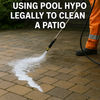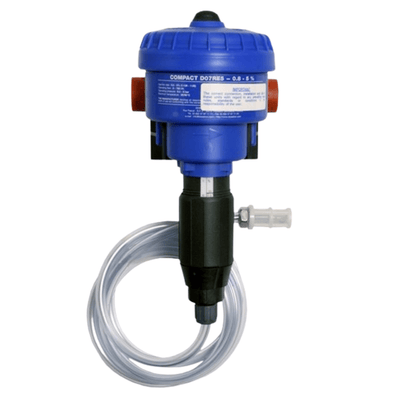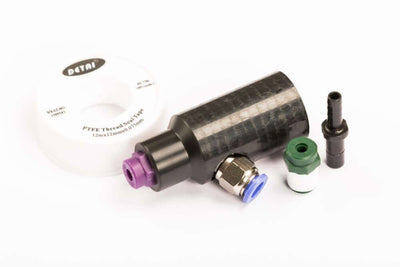The Ultimate Guide on How to Clean Rendered Walls Effectively
Expert Tips on How to Clean Rendered Walls
Rendered walls add a sleek and protective finish to buildings, enhancing their aesthetic appeal and structural integrity. However, like any exterior surface, they are susceptible to dirt, grime, and organic growths such as algae and moss. This makes regular cleaning not just a matter of appearance, but also a key aspect of maintenance. At SoftWash UK, we understand the challenges and nuances involved in cleaning rendered surfaces. In this comprehensive guide, we will walk you through the best practices, recommended products, and expert tips for effectively cleaning rendered walls, ensuring they remain in pristine condition.
What is Render and Why Clean It?
Understanding Render: Its Importance and Maintenance Needs
Render is a type of plaster applied to the exterior of buildings. It's primarily used for its protective qualities, shielding walls from weather elements, and its aesthetic properties, offering a smooth or textured finish in various colors. Render can be made from a range of materials, including cement, lime, or a synthetic mixture, each with its unique characteristics and maintenance requirements.
Regular cleaning of rendered walls is crucial for several reasons:
-
Aesthetic Appeal: Over time, render can accumulate dirt, stains, and biological growths like algae and moss. This not only diminishes the appearance of the building but can also lead to a negative impression of neglect.
-
Longevity and Protection: Dirt and organic growths can be more than just unsightly. They can also cause damage to the render over time, leading to cracks, discoloration, and erosion. Regular cleaning helps preserve the integrity of the render and extends its lifespan.
-
Health and Safety: Accumulated dirt and biological growths can pose health risks, particularly if they lead to the growth of harmful molds. Cleaning rendered walls contributes to a healthier living environment.
What is the Best Cleaner for Render?
Choosing the Right Cleaner for Pristine Rendered Walls
When it comes to cleaning rendered walls, the choice of cleaner is paramount to achieving effective results without damaging the surface. One highly recommended product is the Render Cleaner Gel X Pro. This cleaner stands out for several reasons:
-
Formulated Specifically for Render: Render Cleaner Gel X Pro is designed with the unique needs of rendered surfaces in mind. It effectively removes dirt, algae, and other organic stains without harming the render itself.
-
Gentle Yet Effective: The formulation strikes a perfect balance between being gentle on the render and tough on stains. This ensures that while the render is cleaned thoroughly, its structural integrity and color are not compromised.
-
Ease of Use: This cleaner is user-friendly, making it accessible for both professionals and homeowners. Its application process is straightforward, ensuring that anyone can achieve professional-grade cleaning results.
-
Safety for Surrounding Environment: Render Cleaner Gel X Pro is formulated to be safe for the surrounding environment, including plants and animals. This eco-friendly aspect is especially important for residential areas and buildings close to sensitive ecosystems.
Using Render Cleaner Gel X Pro involves a few simple steps:
- Apply the cleaner to the rendered surface, ensuring even coverage.
- Allow it to sit for a specified period to break down dirt and organic growths.
- Rinse the surface thoroughly with water, removing all traces of the cleaner and dislodged dirt.
It's important to follow the manufacturer's instructions regarding dilution rates and application methods to ensure optimal results and safety.
Can I Pressure Wash Render?
The Risks of Pressure Washing Rendered Surfaces
A common question regarding render cleaning is whether pressure washing is a suitable method. While pressure washing can be effective for certain surfaces, it poses significant risks when used on render:
-
Potential Damage: High-pressure water can be too harsh for rendered surfaces, especially if the render is aged or has pre-existing cracks. The force of the water can exacerbate these issues, leading to further damage.
-
Water Penetration: Pressure washing can force water into the render and the underlying structure. This trapped moisture can lead to dampness inside the building and promote mold growth.
-
Uneven Cleaning: Pressure washing can sometimes lead to uneven cleaning results, with streaks and patches left on the surface.
As an alternative, softwashing methods, which involve lower water pressures and the use of specific cleaning chemicals like those available in our Render Cleaning Chemicals collection, are recommended. This approach is gentler, more controlled, and equally effective, making it a safer choice for rendered walls.
What Chemical for Cleaning Rendered Walls?
Selecting the Appropriate Chemicals for Effective Render Cleaning
The choice of chemical plays a critical role in the cleaning process of rendered walls. It's essential to select a product that is effective against common stains and biological growths while being gentle on the render. Our Render Cleaning Chemicals collection offers a range of products specifically designed for this purpose. When choosing a cleaning chemical, consider the following factors:
-
Type of Stains: Different chemicals are effective against various types of stains. For organic growths like algae, a biocide-based cleaner is often recommended. For general dirt and grime, a detergent-based cleaner may be sufficient.
-
Render Material: The chemical composition of your render (cement, lime, synthetic) will dictate which cleaning agents are safe to use. Always check the compatibility of the cleaning chemical with your specific type of render.
-
Environmental Impact: Opt for chemicals that are environmentally friendly, minimizing harm to plants, animals, and water sources.
-
Health and Safety: Consider the health and safety implications of the chemicals, especially if you are doing the cleaning yourself. Always use appropriate personal protective equipment (PPE) and follow the manufacturer’s guidelines.
The application process for these chemicals typically involves:
- Diluting the chemical as per manufacturer's instructions.
- Evenly applying the chemical to the rendered surface.
- Allowing it to act for the recommended time.
- Rinsing the surface thoroughly to remove the chemical and loosened dirt.
Remember, the key is to use the right amount of chemical – too little may not be effective, while too much can cause damage to the render or the environment.

How Do You Clean Up After Rendering?
Post-Rendering Cleanup: Ensuring a Perfect Finish
Cleaning up after rendering is an essential step to ensure the longevity and aesthetic appeal of the rendered surface. This involves several key steps:
-
Removing Excess Material: After the application of render, promptly remove any excess material from the surfaces and tools. This prevents hardening and staining.
-
Curing Time: Allow the render sufficient time to cure and set. This duration can vary depending on the type of render and environmental conditions.
-
Gentle Cleaning: Once cured, perform a gentle cleaning to remove any dust, debris, or minor stains that may have occurred during the rendering process. This can be done with a soft brush or a low-pressure rinse.
-
Inspect for Imperfections: After the initial cleanup, inspect the rendered surface for any imperfections or areas that require touch-ups. Address these promptly to ensure a uniform finish.
-
Protective Measures: Consider applying a protective sealant or treatment to the render, especially in areas prone to high moisture or organic growths. This can extend the life and appearance of the render.
-
Regular Maintenance: Establish a regular cleaning schedule to maintain the render. This helps in identifying and addressing issues before they become significant problems.
Proper cleanup and maintenance are crucial to maximizing the lifespan and appearance of rendered walls. Using the right techniques and products, like those from SoftWash UK, can make a significant difference in the long-term health of your rendered surfaces.

Understanding Softwashing: An Alternative to Pressure Washing
Softwashing: A Gentle Yet Effective Cleaning Method for Rendered Walls
Softwashing is a cleaning method that has gained significant traction as an effective alternative to pressure washing, especially for delicate surfaces like render. Unlike pressure washing, which relies on high-pressure water jets, softwashing uses low-pressure equipment combined with specialized cleaning solutions to remove dirt, algae, and other organic materials. This method is particularly advantageous for several reasons:
-
Gentle on Surfaces: Softwashing is much less abrasive than pressure washing, making it ideal for rendered walls, which can be damaged by high-pressure water.
-
Deep Cleaning: The cleaning solutions used in softwashing penetrate and break down dirt and organic matter more effectively than water alone, offering a deeper and more thorough clean.
-
Long-Lasting Results: Softwashing often provides longer-lasting results compared to pressure washing. The cleaning solutions can deter the quick return of algae and mold, keeping walls cleaner for longer.
-
Environmental Considerations: Many softwashing solutions are designed to be environmentally friendly, causing minimal harm to surrounding plants and wildlife.
-
Versatility: Softwashing can be tailored to different types of render and various levels of dirt and staining, making it a versatile option for a range of cleaning needs.
For more insights into the benefits and techniques of softwashing, we recommend reading this Interesting Article About What is Soft Washing?. Understanding the principles and advantages of softwashing will help you make informed decisions about maintaining your rendered walls.

Maintaining the Beauty and Longevity of Your Rendered Walls
Cleaning rendered walls is an essential part of maintaining the aesthetic appeal and structural integrity of your property. By choosing the right cleaning methods and products, such as Render Cleaner Gel X Pro and our range of Render Cleaning Chemicals, you can ensure that your rendered surfaces remain in top condition. Remember, while pressure washing might seem like a quick solution, softwashing is often a safer and more effective alternative, especially for delicate rendered walls.
We hope this guide has provided you with valuable insights and practical tips for cleaning and maintaining your rendered walls. For more information on softwashing products and techniques, visit SoftWash UK. Our extensive range of products and resources are designed to help you achieve the best results in maintaining your property's exterior. Remember, regular cleaning and proper maintenance are key to prolonging the life and beauty of your rendered surfaces.






































Need to clean coloured render that has been stained by coving above render, what do you recommend.
Many thanks